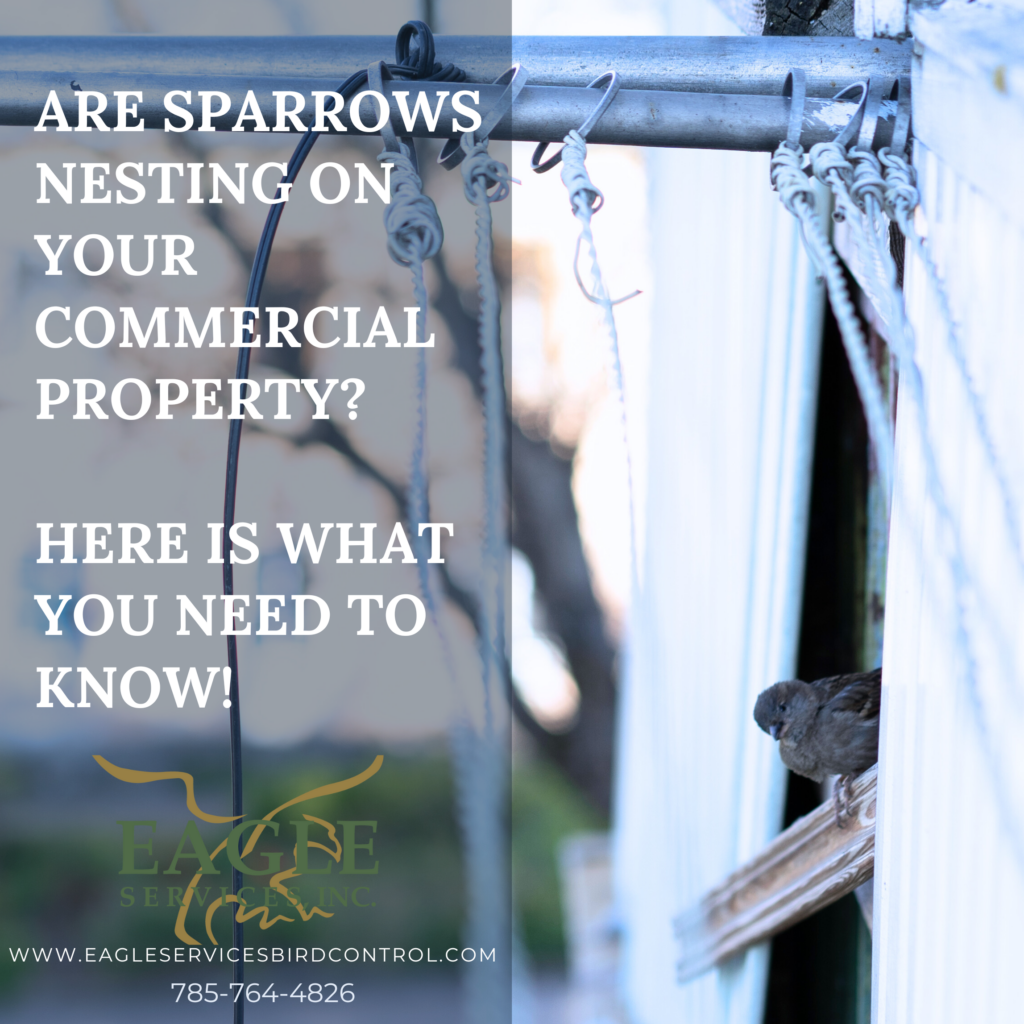
Why Sparrows Are a Problem for Commercial Properties
House sparrows are one of the most widespread bird species in urban areas, known for their aggressive nesting behaviors and rapid reproduction. While small in size, their presence can lead to property damage, health risks, and operational disruptions for businesses.
Sparrow Nesting Habits
Sparrows are highly adaptable and can build nests in tight, hard-to-reach spaces. Understanding their behavior can help businesses prevent infestations before they become a major issue.
- Nesting Season: Sparrows breed from early spring through late summer (March–August) and can produce 2-4 broods per year, each containing 3-6 eggs.
- Nest Locations: These birds prefer small crevices and cavities for nesting, making commercial properties an ideal environment. Common nesting sites include:
- Building facades, signage, and awnings
- Gaps in roofing and wall panels
- Warehouse beams and rafters
- HVAC units, vents, and electrical boxes
- Canopies and loading docks
- Outdoor light fixtures and security cameras
- Nest Construction: Sparrow nests are dense and messy, made from grass, twigs, feathers, and debris. They frequently clog drains, vents, and electrical systems, creating fire hazards.
Why Businesses Should Be Concerned
- Property Damage: Their nests can block gutters, ventilation systems, and machinery, leading to operational issues and costly repairs.
- Fire & Safety Hazards: Nesting in electrical signs and equipment increases the risk of short circuits and fires.
- Health Risks: Sparrows carry mites, bacteria, and parasites that can contaminate food and work environments.
- Aggressive Behavior: Sparrows chase away native birds and can be territorial, making areas less hospitable for employees and customers.
- Increased Cleaning Costs: Their droppings stain building exteriors, sidewalks, and vehicles, requiring frequent maintenance.
Preventing Sparrow Nesting on Commercial Properties
- Seal Gaps & Openings: Close off small crevices where sparrows may enter and nest.
- Install Exclusion Devices: Use netting, vent covers, and bird spikes to block nesting spots.
- Remove Nesting Materials: Regularly check and clean problem areas to prevent long-term infestations.
- Use Sound & Visual Deterrents: Sparrow-specific deterrents, such as reflective tape and sound devices, help discourage nesting.
- Limit Food Sources: Secure trash bins, eliminate standing water, and prevent food waste buildup to make the area less attractive to sparrows.
Early prevention is key to keeping your business clean, safe, and sparrow-free. Taking proactive measures now can save on costly repairs and health risks down the road.